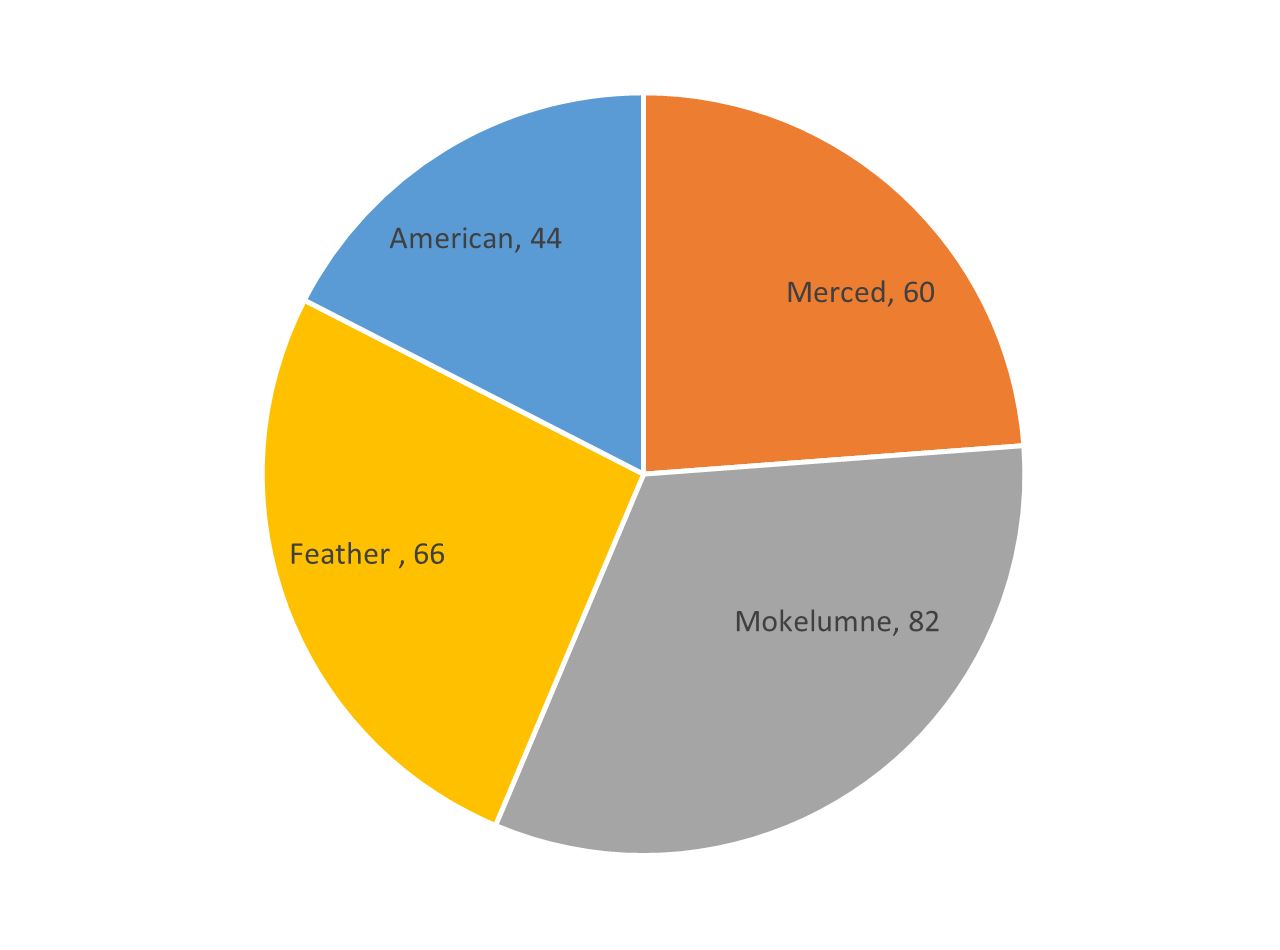In a 2014 blog post, Peter Moyle wrote about the Blue Creek Salmon Sanctuary on a large tributary of the lower Klamath River. The Blue Creek effort is one of the most important initiatives toward saving salmon in California, and also serves as a demonstration and an inspiration. California needs more salmon sanctuaries to preserve the state’s wild salmon heritage.
There are many potential salmon sanctuaries throughout California. In this post, I list highly recommended rivers plus and few new ones. I include only those I personally know well, but there are likely more that fit the paradigm.
My suggestions come from two major watersheds that deserve special mention and attention.
Klamath River Watershed:
The Salmon River is a wild, natural tributary of the lower Klamath River that retains the last wild population of endangered spring-run Chinook salmon. Its watershed now suffers from the ravages of recent forest fires. The river is a special place to the Karuk Tribe.
- The Scott River, the eastern neighbor to the Salmon River, features the last significant wild population of Coho salmon in California. While nearly ruined by logging, fires, and ranch development, the Coho hang on almost belligerently with the help of the Trinity and Marble Mountains and from some of the ranching community. The river begs for the return of its beaver, so it can again be called “Beaver Valley.” Some of the ranchers deserve credit for keeping the river and its fish on life-support.
- The Shasta River is the next neighbor to the east of the Scott River. The river sustains the Klamath’s largest population of wild fall-run Chinook salmon, thanks in large part to the efforts of the Nature Conservancy. The river has hope for the return of the Coho salmon with the help of ranchers, Sierra Pacific Industries, the tribes, and Crystal Geyser. Ranchers, please no more revolts.
- Deming Creek, among the headwaters of the Sprague River, a major Klamath River tributary in Oregon that drains into California, is a historical remnant of a creek that once supported wild spawning Klamath spring-run salmon and steelhead (really). It still has the southernmost extant population of endangered bull trout, which once occurred in California but are now extirpated in this state. If the Klamath dams are removed, will the salmon return to Deming Creek? I suspect the salmon will need some help getting to this beautiful place.
Sacramento River Watershed:
- The upper McCloud River above and below McCloud Falls is one of the most beautiful places in California. The McCloud once sustained winter-run and spring-run salmon below the falls. Above the falls on the south flank of Mt. Shasta is the McCloud Redband Trout Refuge. If part of the strategy is for trap-and-haul sanctuaries, this is a great place to put winter-run or spring-run salmon.
- Upper Mill Creek and Deer Creek on the south flank of Mt. Lassen are two gems that retain small populations of spring-run Chinook salmon at the highest elevations known for the species. Ravaged by fires in recent years, they too need help. At least salmon in theses streams do not need a taxi service.
- To the south of Deer and Mill creeks, Butte Meadows on upper Butte Creek upstream of falls and water diversions has much potential as a sanctuary. This location needs a taxi service only for adult spawners, but not their offspring should be able to migrate downstream volitionally.
- Upstream of Lake Almanor, the upper North Fork Feather River drains the southern flank of Mt. Lassen, eventually finding its way past a series of dams into the Central Valley and the Sacramento River. This is another trap-and-haul sanctuary with strong potential, though it was severely affected by the recent Dixie Fire.
- The upper North Yuba River above Bullards Bar Reservoir is a gem of a stream that once supported spring-run Chinook salmon. Again, this would be a trap-and-haul option.
- The Middle Fork American River well upstream of Folsom Reservoir, another historical spring-run salmon stronghold, is also a good candidate. Badly damaged in the 2022 Mosquito Fire, the Middle Fork American is in need both of help with the forest and of a two-way taxi service for reintroduced salmon.
One thing common to many of these potential sanctuary locations is a legacy of massive fires in recent years. A substantial effort is needed to restore these Klamath-Trinity and Sierra ecosystems to make them sustainable once again for California salmon and steelhead.
I also advocate for Chinook salmon sanctuaries below all our major Central Valley rim dams. The dams were built with the promise of mitigation for the salmon runs. It is time these many-decades-old promises were kept. Though most of the lower rivers have escaped the direct ravages of fire, the consequences to their upper watersheds still affect the Valley reaches. Without the remnant Valley salmon, there would be few salmon left in California.
Time has taken a toll on the Valley salmon below the rim dams. To weather the effects of droughts, fires, and climate change, and to restore viable populations in the major salmon-bearing rivers, sanctuaries in both the upper watersheds above the dams and downstream of the dams are necessary.
For more information on California’s Chinook salmon see: https://wildlife.ca.gov/Conservation/Fishes/Chinook-Salmon








